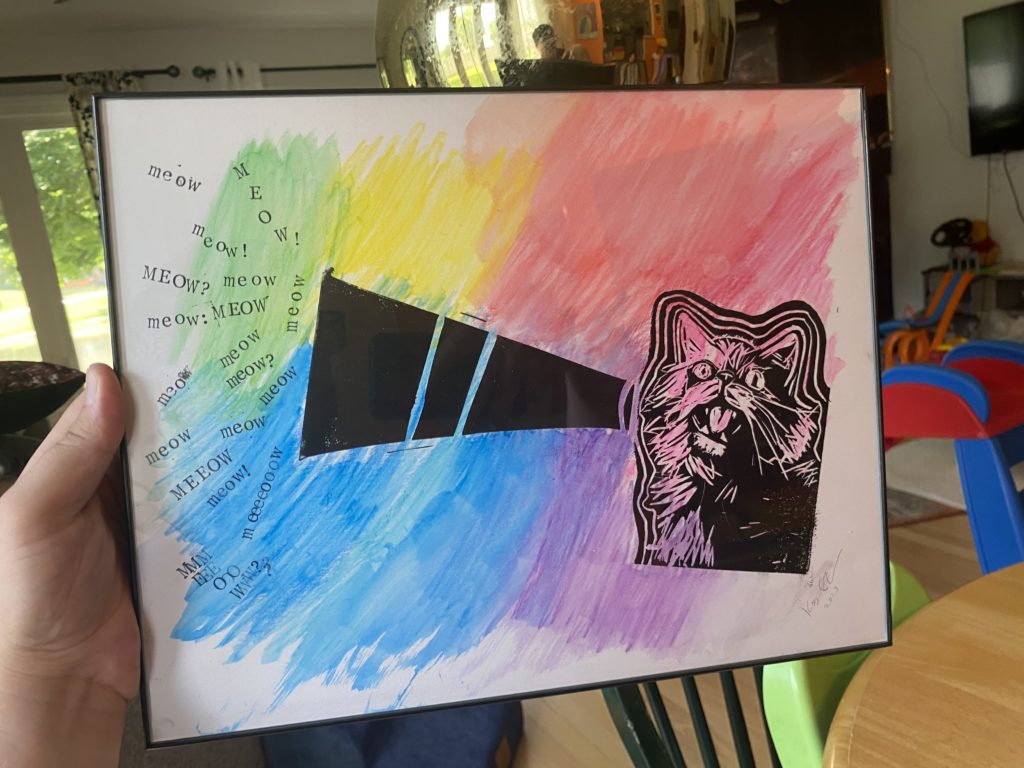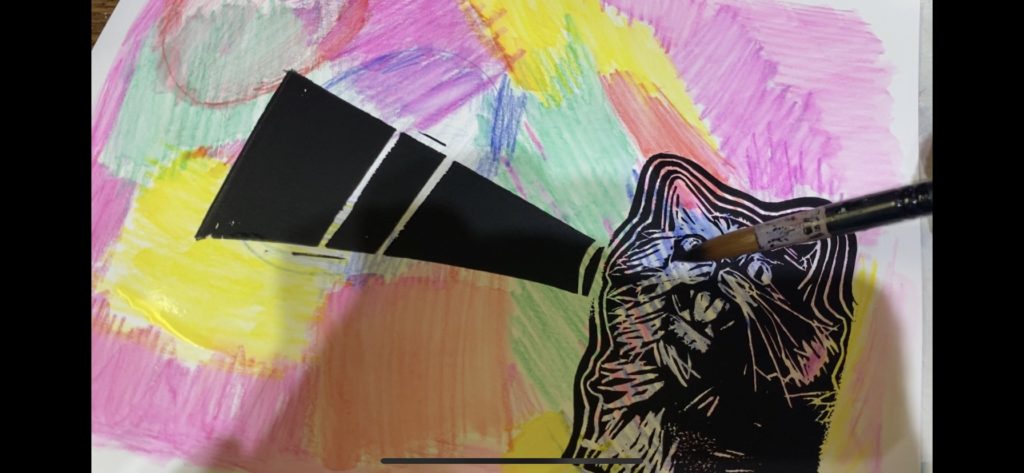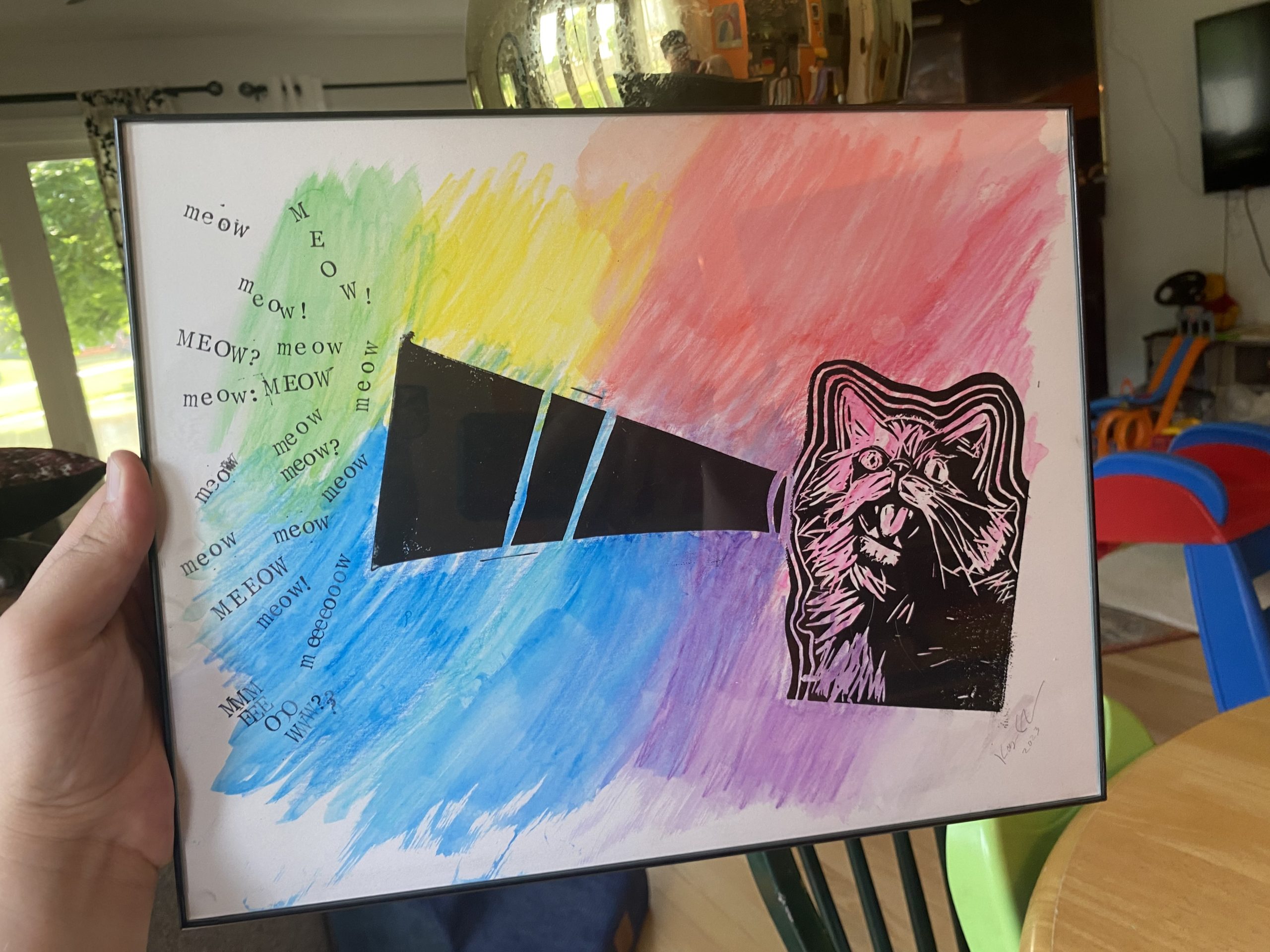This page has affiliate links to products I have tried and recommend, see my disclosures.
Are you wondering if it’s possible to watercolor after block printing? Are you interested in making mixed media art with watercolors and linocut prints or woodcut prints? I was wondering the same thing this week and decided to try it out. This was a fun project because I was using a new type of paper, a new type of material for linocut printing, and a brand new watercolor pencils. Here’s my experience trying to add watercolors to relief printing:
Type of Ink is Important
If you want to watercolor after block printing, the most important thing to know is that the type of block printing ink you are using is very important. Many beginner block printing kits come with Speedball Relief Ink, which does not indicate that it is oil-based. That’s because it is not oil based. It is actually acrylic based ink that will reactivate when you use water in the future. I did do a test with watercolor and the beginner relief ink that I had printed on some newspaper print paper. The result was a very smudgy looking picture as the black ink immediately left the page and smeared.
The best type of ink to use is oil based ink. My next attempt was with Speedball Professional Relief Ink, Supergraphic Black. This is oil-based but still cleans up with soap and water. I use dishwashing soap, although I’m told that the dishwashing soap might eventually wear down my brayer. You can use something like Simply Green to wash up too. The oil-based ink must be completely dry before you attempt to watercolor. You can apply watercolor directly over the ink, which is what I did in a test, or you can use watercolor pencils on the paper ahead of printing, and then activate them afterwards. I tried this on my newest work (it’s called Breakfast Time) and it came out super great. Check out the results below:

Important Tips When Watercolor and Printmaking
These are just things I think are important if you’re going to try it yourself. If you come across more ideas, let me know in the comments!
- Be sure to let the oil-based ink dry! I waited 24 hours for the oil-based ink to try completely to the touch. I know that it can take longer in other climates. Be careful and wait until it’s fully dry. Oil-based ink takes a lot longer than acrylic ink to dry, so it’s best to leave it for at least 24hrs before attempting to use watercolors on top of it.
- When using watercolor pencils (I used Art Magic Watercolor Pencils, Set of 48 Professional Colored Pencils for this project), clean your brush really well between colors. The smudginess when the colors combine and DO NOT mix will not look good next to the print-making ink. It will look like you smudged the ink, when in fact you just smudged the watercolors that did not mix well.
- Don’t use too much water. Because of all the ink on the paper, I found that when I used too much water the paper bent and did not look good. Even with a frame, it’s best to try and avoid warping.
- Use mixed-media pape (like this Strathmore Mixed Media Paper), not watercolor paper. Watercolor paper has more bumps, even on the smooth side, that make it impossible to get a good relief print. I found that mixed-media paper like ___ works really well and can hold up with both the water and ink being applied. Also, it’s a little cheaper than regular watercolor paper, which is kind of a nice bonus.
- Although I successfully used watercolor pencils, when I tested using watercolor paint directly from the tube (I prefer Windsor Newton watercolors, like this Winsor & Newton Cotman Watercolor Paint Set) the result was more to my personal liking. I did enjoy the bright color combinations I could achieve using watercolor pencils. I think in the future it will depend on what colors I need and what the project entails. One great thing about Winsor and Newton Watercolor paint is that the professional and beginner tubes are both lightfast so you do not need to spend a lot of money to test them out and get great results. More on watercolor paints in a future post!

As you can see it’s possible to paint right over the black oil-based ink without worrying about it smearing everywhere. If you’re adding watercolors to printmaking projects, oil-based ink is the best way to go.
Did you try this? Let me know in the comments!
